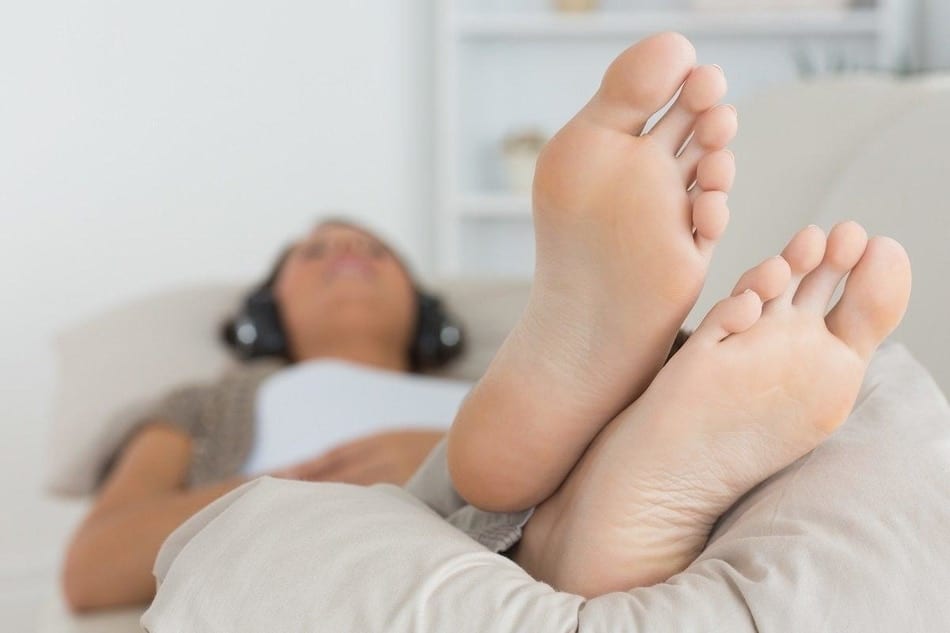A recent medical survey surprisingly revealed the obvious – people who sleep less than 5 hours daily are at a greater risk of clogged arteries versus those who sleep for 7-8 hours. This has opened up discussion on people suffering from peripheral artery disease (close to 200 million globally) and how their sleep patterns put them at a greater risk. Taking that into account, it is time you note down the best sleeping position for peripheral artery disease and the one to avoid.
In this comprehensive post, we will try to give you an idea of the sleeping positions that a PAD-affected person must follow, the ‘one’ that they must avoid, try to get a better understanding of blood circulation while sleeping, and certain lifestyle changes that they must make to maintain optimal circulation. Time for the details –
Table of Contents
Which is the best sleeping position for peripheral artery disease?
In this section, you will get clarity about the sleeping position that is most beneficial for your PAD condition. Let us give you the details –
Position 1 – The Elevated Leg Format

What is it?
In this case, you will have to put the pillows below your legs and elevate them to such a position wherein your lower back and hips are in alignment with each other.
Benefits –
When you elevate your legs above your heart level, automatically this improves blood circulation and relieves the pressure on your arteries. This reduces swelling and allows the free flow of blood.
Position 2 – The Supine Format

What is it?
Touted to be one of the best sleeping position for peripheral artery disease, in this case, you will have to lie on your back with your legs elevated. Take 2 pillows (ones that can hold your strength) and place them below your legs (under the knee). Then take another pillow and put it under your head in a manner that, your head, and neck are in alignment with your legs elevated.
Benefits –
This position keeps your body aligned and eases the constant strain on the walls of your artery. Thus, blood flow is bettered and the chances of sudden cramps in your legs are negated.
Position 3 – The Side- Lying Format

What is it?
In this case, you have to choose your comfortable side to lie on. Now, place a pillow, or a cushion in between your knees so that your spine is aligned well. After doing that, you have to lay your head on a supportive pillow so that your neck and head are at the same level.
Benefits –
When you are sleeping on one side, your blood flow improves (since the pressure is limited), and hence the sudden cramps associated with your PAD condition also reduce substantially.
You can choose any of the 3 positions that are mentioned above to sleep with ease if you are suffering from PAD issues.
Which position you must avoid?
To only know which is the best sleeping position for peripheral artery disease is not enough. It is also crucial for you to check out those sleeping positions that you must avoid, to not accelerate your PAD condition. To give you a glimpse of the same –

- Do not sleep on your stomach when you are affected by the peripheral artery condition.
Negative –
When you sleep on your stomach, it so happens that your legs are placed naturally at a lower position than your heart. So, while circulating, the blood pools into the lower part of your limbs. When that happens, automatically that area will swell, thereby causing you discomfort.
Another issue that could crop up is – when you are sleeping on your stomach, that puts additional pressure on your spine and neck. This again hinders the natural blood flow, which can accelerate your medical condition to much worse over time than it already is.
Therefore, as an aware individual, you need to know the position which you must avoid while you are sleeping, to keep your PAD condition under control.
Assuming you have been reading till here, one can state that you have a fair idea about those beneficial sleeping positions and the ones to avoid. But that does raise a different query in your mind – how does blood circulation work when one is sleeping? In the next section, we will give you a brief idea of the same.
How does blood circulation work while sleeping?

It is no secret that while the body is in slumber, it undergoes multiple processes that help it rejuvenate (especially in the cardiovascular system). However, when a person is suffering from peripheral artery disease, what happens is, their blood flow to the extremities is severely restricted. Hence, if they are positioned incorrectly, that directly affects the blood flow and leads to cramping or numbness. Therefore, you must figure out best sleeping position for peripheral artery disease and follow that strictly (if you have PAD or even otherwise) to enable proper blood flow through your body.
Key lifestyle changes to better PAD condition

As you are well aware peripheral artery disease is not a medical issue that can be dealt with in one go, hence, apart from caring about sleeping position, you must bring in some lifestyle changes as well.
From eating a diet rich in fiber, nutrients, and minerals to staying hydrated to indulging in meditation, breathing exercises, and a proper bedtime routine – the key to dealing with this is – following a routine. When the body will get adjusted to it, naturally, your medical condition will improve considerably.
Final thoughts
If you have read this article well, then you have already picked out which is the best sleeping position for peripheral artery disease – the supine, elevated leg, and side-lined for the record. Hence, you can choose whichever suits your requirements the most and follow that accordingly. Only perfecting the sleeping position is not enough. As mentioned above, you must also bring in certain lifestyle changes to ensure that the medical issue does not accelerate over time.
You can scroll down to get a glimpse of some of the commonly asked questions. Also, if you found this page useful, do share it with your friends and keep following us for more interesting tips on medical issues.
FAQ
1. How is PAD connected to sleep?
As mentioned before, peripheral artery disease is a medical condition wherein – the artery that supplies blood to your lower area (leg and feet) is blocked. Improper sleeping conditions can accelerate this medical condition to a great extent. Therefore, you must choose any of the specific positions mentioned above to ensure that there is proper blood flow while you are asleep.
2. Should you change sleeping positions to avoid cramps?
Even if you have picked any of those mentioned best sleeping position for peripheral artery disease then also, you must change your sleeping position, every 2-3 hours. Also, ensure that whatever your sleeping position, you must elevate your leg.
3. When must you connect with a healthcare professional?
At the earliest stage. A medical professional will be able to guide you correctly regarding your sleeping position and the pillows and bed that you use. You will require this guidance if you wish to cure yourself.
4. What kind of mattress helps PAD patients?
For the unversed, when choosing the mattress, you have to check if it can cradle one’s pressure points and promote the alignment of your spine. Apart from that, also note if it can hold your weight. Only when these criteria match, must you opt for that mattress.
Monalisa Mukherjee is a content writer, copywriter and editor with 4 years of experience. She has written for websites like Biography Talk, The Rich Net Worth, Contour Cafe, He And She Fitness and Fiction Pad. She is currently associated with a noted Digital Marketing Agency and specialises in writing press release, guest posts, articles on travel, entertainment, food recipes, celebs, lifestyle, tech, health, and fashion.





